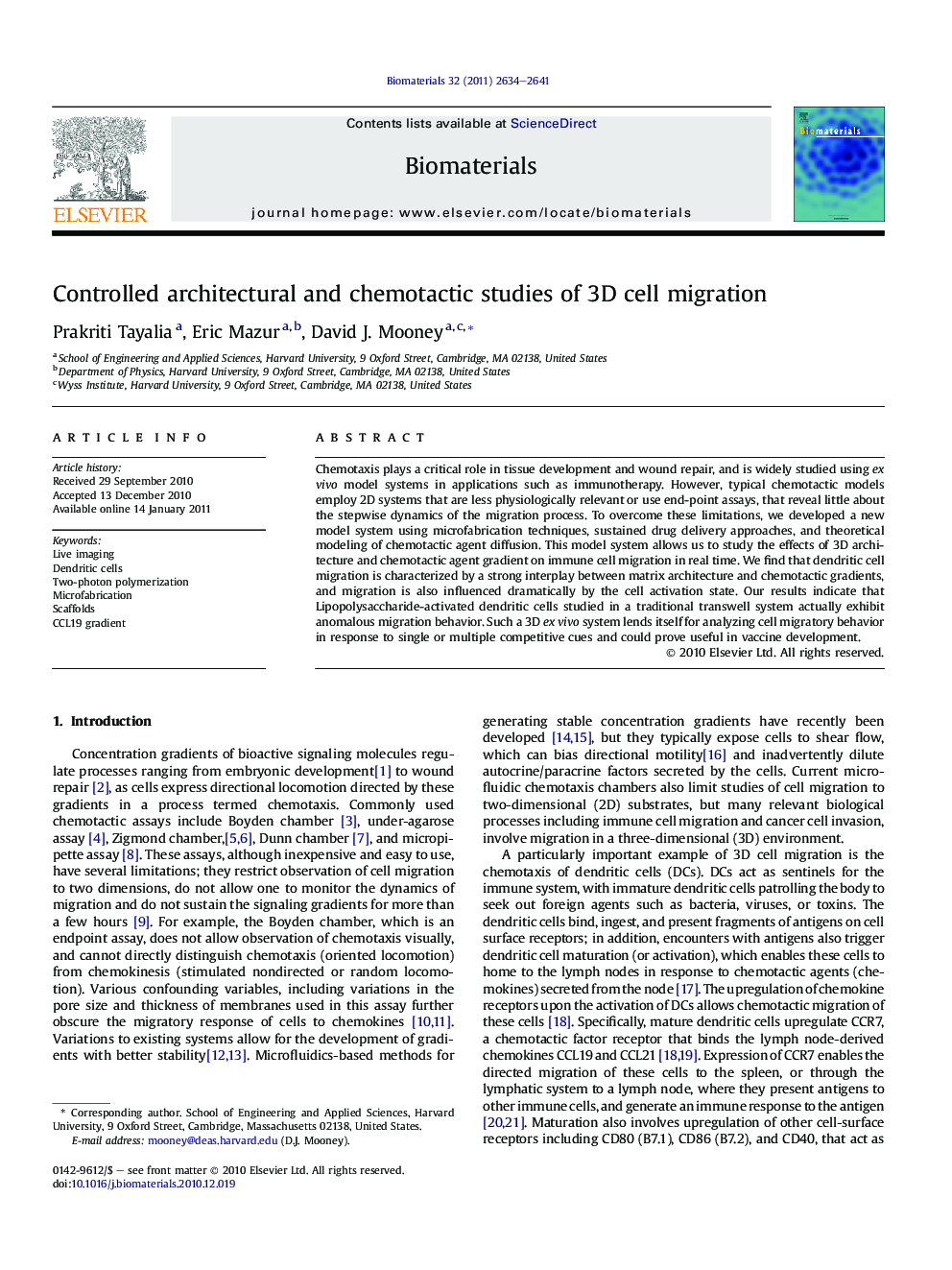| Article ID | Journal | Published Year | Pages | File Type |
|---|---|---|---|---|
| 8109 | Biomaterials | 2011 | 8 Pages |
Chemotaxis plays a critical role in tissue development and wound repair, and is widely studied using ex vivo model systems in applications such as immunotherapy. However, typical chemotactic models employ 2D systems that are less physiologically relevant or use end-point assays, that reveal little about the stepwise dynamics of the migration process. To overcome these limitations, we developed a new model system using microfabrication techniques, sustained drug delivery approaches, and theoretical modeling of chemotactic agent diffusion. This model system allows us to study the effects of 3D architecture and chemotactic agent gradient on immune cell migration in real time. We find that dendritic cell migration is characterized by a strong interplay between matrix architecture and chemotactic gradients, and migration is also influenced dramatically by the cell activation state. Our results indicate that Lipopolysaccharide-activated dendritic cells studied in a traditional transwell system actually exhibit anomalous migration behavior. Such a 3D ex vivo system lends itself for analyzing cell migratory behavior in response to single or multiple competitive cues and could prove useful in vaccine development.
